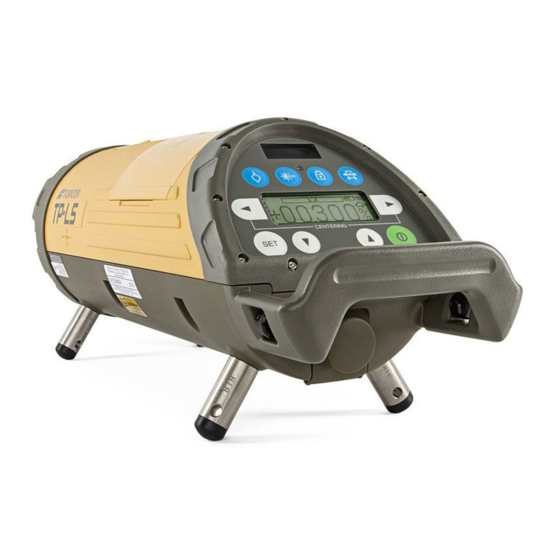
Table of Contents
Advertisement
For more information contact Synergy Positioning Systems or
visit the Synergy Positioning Systems website at www.synergypositioning.co.nz
All branches: Phone 0800 867 266 Email: info@synergypositioning.co.nz
INSTRUCTION MANUAL
PIPE LASER
TP-L5
SERIES
TP-L5GV
TP-L5G
TP-L5BG
TP-L5AV
TP-L5A
TP-L5B
32956 90092
Advertisement
Table of Contents

















Need help?
Do you have a question about the TP-L5GV and is the answer not in the manual?
Questions and answers